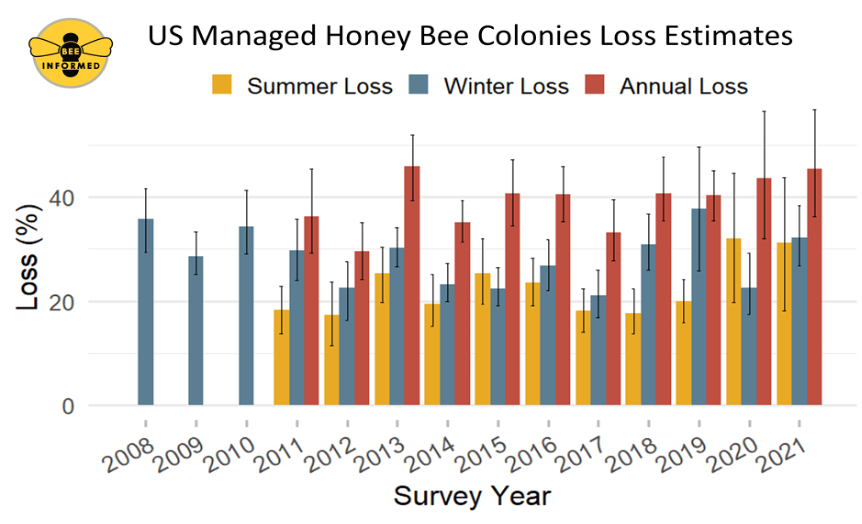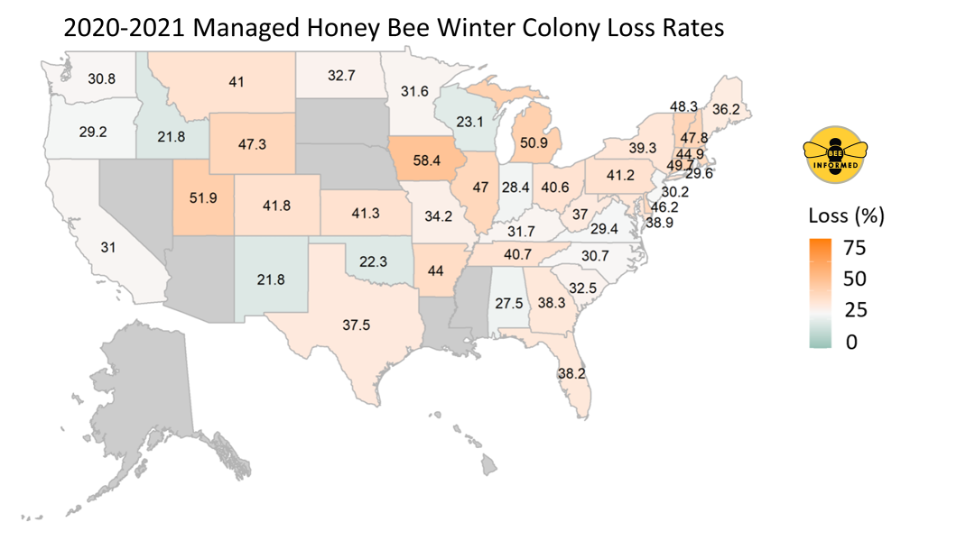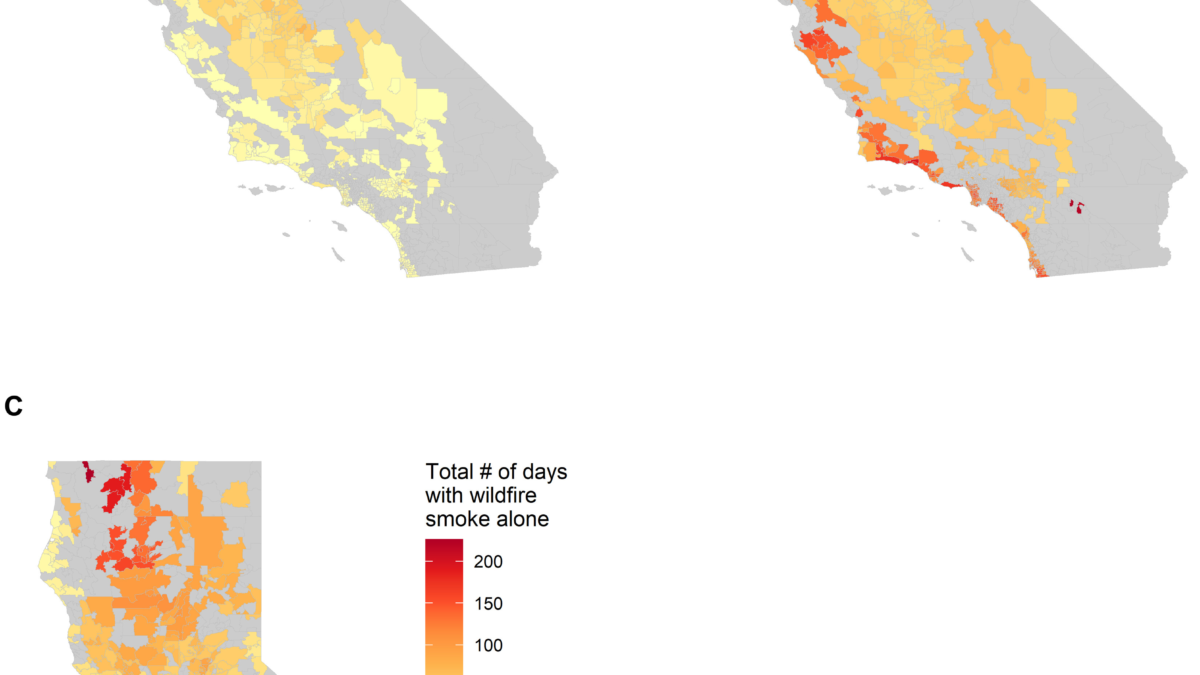U.S. honey bee colonies hit by second-highest annual loss on record in 2021

By Nathalie Steinhauer, Dan Aurell, Selina Bruckner, Mikayla Wilson, Karen Rennich, Dennis vanEngelsdorp, and Geoffrey Williams
23 June 2021
(Bee Informed Partnership) – The Bee Informed Partnership (http://beeinformed.org) is a non-profit organization that works alongside beekeepers to improve honey bee colony health and survivorship across the United States. One of the organization’s longest running programs, the National Colony Loss and Management Survey was initiated with the support of the Apiary Inspectors of America in 2007. Since then, it has monitored managed honey bee colony loss rates, and identified risk factors and protective measures associated with beekeeping management (Steinhauer, vanEngelsdorp and Saegerman, 2021).
This year marks the fifteenth anniversary of the survey, which relies on voluntary participation of beekeepers across the country during the month of April. It covered the one year period between April 2020 and April 2021.
A total of 3,347 beekeepers from the United States that collectively managed 192,384 colonies on 1 October 2020 provided validated survey responses. This represented 7% of the estimated 2.71 million managed honey-producing colonies in the country in 2020 (USDA NASS, 2021).
Colony loss rates were calculated as the ratio of the number of colonies lost to the number of colonies managed over a defined period (Kulhanek et al., 2017). Loss rates should not be interpreted as a change in population size because beekeepers are able to replace lost colonies throughout the year. Therefore, colony loss rates are best interpreted as a turn-over rate, as high levels of losses do not necessarily result in a decrease in the total number of colonies managed in the United States.

During Winter 2020-2021 (1 October 2020 – 1 April 2021), an estimated 32.2% of managed colonies in the United States were lost (Fig. 1). This represented an increase of 9.6 percentage points (pp) over the previous winter loss rate (22.6%), and was 3.9 pp higher than the average winter loss (28.3%) reported by beekeepers over the previous 14 years. Every year, participants were asked to report what level of winter loss they would consider acceptable. This year respondents reported that a 23.3% winter loss would be acceptable, which is 2.3 pp higher than last year (21.0%) and 5.6 pp higher than the average of 17.8% over previous years.
During Summer 2020 (1 April 2020 – 1 October 2020), an estimated 31.1% of managed colonies were lost in the United States (Fig. 1). This was slightly lower − 0.9 pp − than last year’s estimated summer colony loss (32.1%), but it was 8.6 pp higher than the average summer loss reported by beekeepers since the summer of 2010 (22.8%), when summer losses were first monitored.
Over the entire year (1 April 2020 – 1 April 2021), beekeepers in the United States lost an estimated 45.5% of their managed honey bee colonies (Fig. 1). This is the second-highest annual loss on record, 1.8 pp higher than last year’s estimated annual loss (43.7%), and a 6.1 pp increase over the average loss rate (39.4%) over the last 10 years. […]
To calculate loss rates for individual states, we assigned beekeepers to all states where they reported managing colonies during the survey year. As a result, most backyard beekeepers were assigned to one state. Conversely, some sideliner (7.0%; n = 86) and most commercial beekeepers (74.3%; n = 35) moved their colonies across state lines, so their loss rates were included in the loss calculation for all the states in which they managed honey bee colonies. State loss rates varied considerably over the country (Fig. 3; for historic state loss rates see https://research.beeinformed.org/loss-map/). [more]
United States Honey Bee Colony Losses 2020-2021: Preliminary Results


